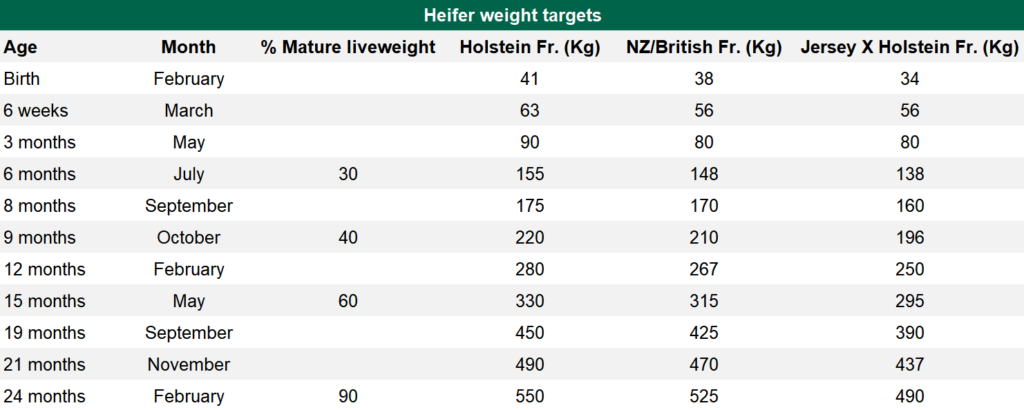Contract rearing is an up and coming epidemic within the agricultural industry. A vital part of entering into a contract rearing arrangement is the contract between the farmer and the rearer.
This will be the go to document if any issues arise between the farmer and the rearer; So, it must be completed right from the start.
Contracts are available to download online or else you can draw up your own specific contract to your arrangement; but, it is important that all the necessary components are covered.
1. Payment
The rate of payment and the manner of payment should be clearly indicated in the contract, along with the date that the heifers arrive on the rearer’s farm (start of payments), and the date that they leave the farm (end of payments).
A flat rate is the most common method of payment. However, some farmers include bonus payments if target weights are achieved.
The variability is huge around the rate of payment. It can vary from €1 / heifer / day to €1.60 / heifer / day depending on the contract rearer’s production costs and what the owner is willing to cover themselves.
2. Mating procedures
The contract should state the mating start date and the mating finish date for the heifers. The administrator and the method of insemination (stock bull or AI) should also be included.
The owner usually supplies all heat detection materials, the technician, straws or a stock bull/bulls. If a stock bull is used, the owner should cover all costs incurred associated with the animal/animals.
It is also important to include how the empty heifers will be managed.
3. Health management
The current disease status of both farms should be known before entering into a contract rearing arrangement. This will determine the likelihood of the animals contracting a disease before entering or leaving the rearer’s farm.
In the case that there are other animals on the farm, it should be stated in the contract that your replacement heifers are managed as a separate group and are not to come in contact with any other animals on the farm.
The contract should also specify the dates and details of vaccinations that the heifers should receive.
This is usually carried out by the contract rearer, but the cost of the vaccinations can be covered by the rearer or the owner depending on the arrangement.
A pre-movement test must be carried out on both the contract rearer’s farm and the owners farm before the planned return date of the in-calf heifers. This should be done in sufficient time to allow for two further tests in the event of there being a reactor.
4. Target weights
It is important that heifers are regularly weighted whilst on the rearer’s farm to track their progress.
Target weights should be agreed upon and specified in the contract. This should include intermediate weights and the agreed final target weight of the heifers before they are returned to the farm.
In some cases when target weights are not met, the rearer pays the owner the market value of the difference in weight.
This should be included in the contract along with a plan on how to rectify the issue. This may include additional concentrate supplementation over the winter period.
Some owners carry out the weighing themselves; where as others leave the contract rearer to weigh the heifers – but they supply the weighing scales.
Until a trusting relationship has been built between the farmer and the rearer, most farmers will take some part in the weighing of their heifers; however, every situation is different.
5. Unforeseen circumstances
If an animal dies for any reason the contract should specify who covers the costs of the disposal of the animal and whether the rearer should be paid for the animal up until its death, or not.
The owner can then decide to remove the heifers from the rearer’s farm if they so wish. All these details should be included in the contract.
It is important to note that contract rearing is a hand holding exercise for the first few years after entering into the arrangement until the rearer is confident in their own ability and the owner is confident in the rearer’s ability to successfully rear the heifers.

